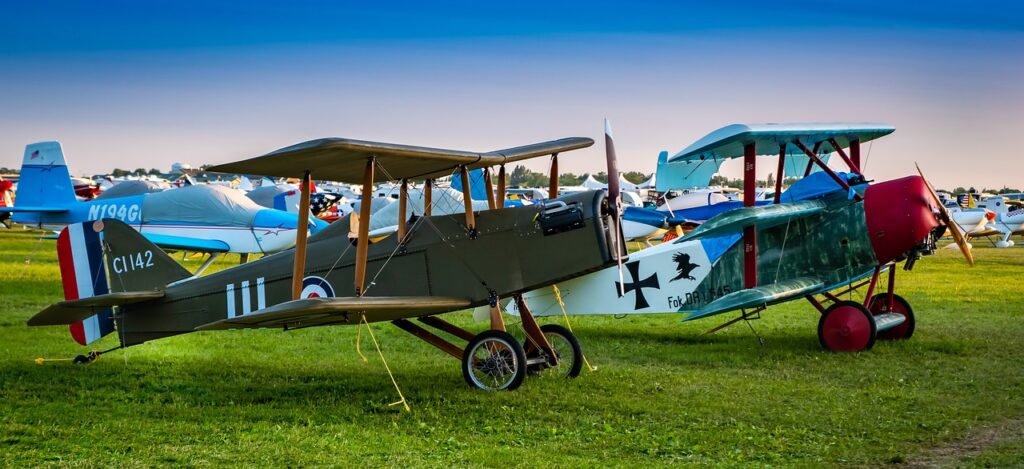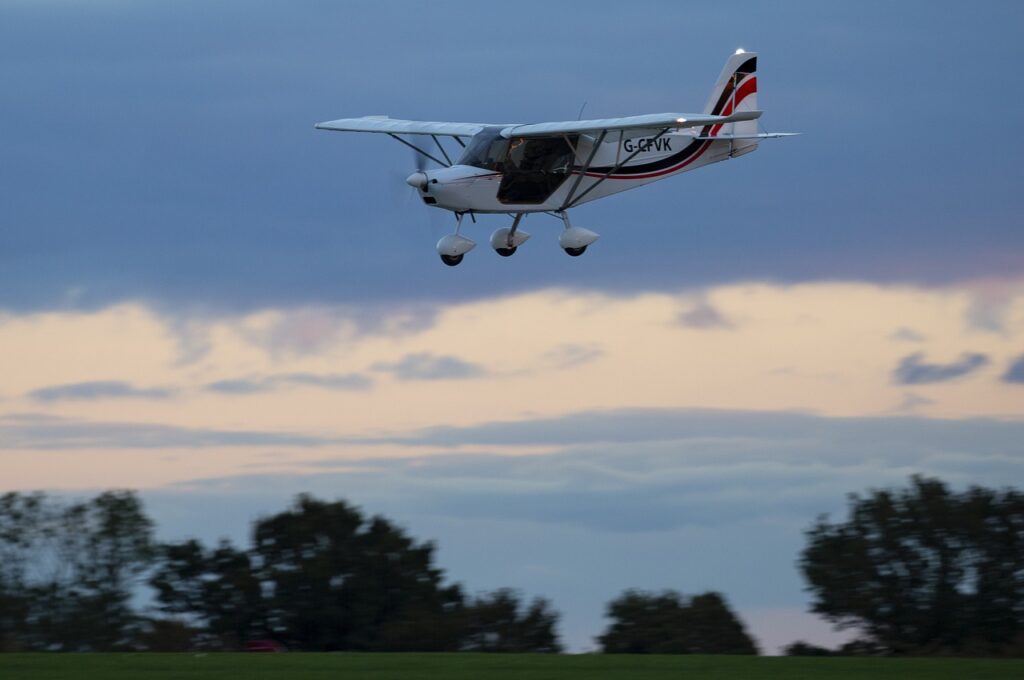From Piloting Dreams to Realities
Why Light Aircraft?
Stepping into the cockpit of a light aircraft can offer an instant sense of freedom and thrill. With a wingspan that blends elegance and efficiency, these aircraft are designed to push boundaries. From two-seater planes to innovative experimental models, the diversity within the world of light aircraft is astonishing.
From the cockpit, pilots can take in stunning views, soaring over cities, mountains, and coastlines. With each flight, pilots become part of a tight-knit community, bonded by a shared love for the skies. They trade stories, tips, and advice, constantly pushing each other to new heights.
The World of Light Aircraft
History
Light aircraft have a rich history that dates back to the early 20th century. The first successful flight of a small aircraft can be put down to the Wright brothers, who made history with their Flyer in 1903. This breakthrough paved the way for the development of light aircraft as we know them today.
During World War I, light aircraft played a crucial role in surveillance and aerial combat. The light and nimble nature of these planes made them ideal for missions that required agility and speed. After the war, surplus military aircraft were repurposed for civilian use. This gave rise to a new era of people taking up flying as a hobby.
In the following decades, improvements in technology and design led to the creation of more refined small aircraft models. The introduction of engines with more power and better efficiency allowed pilots to explore new horizons.

Today
Today, light aircraft are not only popular among ‘flying for fun’ pilots but also serve a range of purposes, including aerial imagery, medical transport, and farming applications.
A wide range of models are available, each designed to cater to specific needs. One of the most popular types is the smaller aircraft, which offers a perfect balance between performance and budget. These planes are often used for training purposes and recreational flying. Allowing pilots to gain valuable experience while enjoying the thrill of flight.
For those seeking a more grand experience, there are high-performance aircraft fitted with advanced avionics and comfortable interiors. These planes are designed for longer journeys and offer extras such as climate control, leather seats, and state-of-the-art entertainment systems. They provide a blend of comfort and performance, making them a popular choice.
In recent years, there has been a surge in the use of experimental light aircraft. These models push the limits of design and technology, often with features such as electric propulsion systems or folding wings. Enthusiasts of these types of aircraft welcome the spirit of innovation. They often seek new ways to improve the performance and efficiency of their planes.
Benefits of Owning a Light Aircraft
Owning a light aircraft comes with a myriad of benefits that go beyond the sheer joy of flying. For many pilots, having their own plane means unrestricted access to the skies, allowing them to explore remote destinations and embark on spontaneous adventures. With a light aircraft, the world becomes their playground.
Furthermore, Smaller Aircraft can offer a cost-effective means of transport, especially for those who often travel to remote areas or have a relaxed schedule. With the ability to land in smaller airports and airfields, light aircraft can save valuable time.
Owning a light aircraft also opens up chances for pilots to connect with similar individuals and become part of a vibrant community. Fly-ins, air shows, and flight events provide venues for pilots to share their passion, exchange knowledge, and forge friendships. The sense of connection within the light aircraft community is impressive. It is a support system that extends far beyond the cockpit.
Regulations and Licensing for Pilots
As with any form of aviation, there are regulations and licensing requirements that light aircraft pilots must adhere to. These guidelines ensure the safety of both pilots and passengers, as well as the integrity of the aviation industry as a whole.
One of the key requirements for light aircraft pilots is getting a private pilot license (PPL). This means completing a certain number of flight hours. Plus, passing written and practical exams, and meeting medical standards set by aviation authorities. The PPL allows pilots to fly light aircraft as a hobby, with certain rules on passenger numbers and flying conditions.
In addition to the PPL, pilots may choose to pursue further ratings and endorsements to enhance their skills and expand their flying privileges. These include instrument rating, which allows pilots to fly in low visibility conditions, and multi-engine rating, which permits the operation of aircraft with more than one engine.
It is also vital for pilots to stay updated on the latest regulations. Taking regular training to ensure their skills remain sharp. Medical reviews are also required to uphold the pilot license, as physical fitness is an important aspect of safe flying.
Safety Considerations for Flying Light Aircraft
Safety is crucial in the world of aviation, and light aircraft pilots must prioritise it at all times. While light aircraft are designed with safety in mind, pilots must also take proactive measures to reduce risks and ensure a smooth flight.
One of the key aspects of safety in light aircraft flying is careful pre-flight planning and inspections. Pilots must assess weather conditions, airspace restrictions, and any potential hazards along the intended flight path. They should also perform an exhaustive inspection of the aircraft, checking for any signs of damage or malfunction.
During the flight, pilots must maintain situational awareness and adhere to proper communication protocols. They should always monitor weather conditions and be prepared to make necessary adjustments to the flight plan if needed. It is also crucial to practice effective decision-making and risk management, always keeping the safety of themselves and others, on board, in the air and on the ground as a priority.
Regular maintenance and inspections are vital to ensure the airworthiness of the aircraft. Pilots should follow the manufacturer’s guidelines and adhere to scheduled maintenance checks. Additionally, staying updated on the latest advancements in aviation technology and safety practices can contribute to a safer flying experience.
Maintenance and Care of Aircraft
Proper maintenance and care are necessary for securing the longevity and airworthiness of light aircraft. Pilots must follow the manufacturer’s guidelines and adhere to instructed maintenance schedules to keep their planes in optimal condition.
Regular inspections, both pre-flight and annual, are necessary to detect any signs of wear or damage. Pilots should pay close attention to the engine, propellers, control surfaces, and avionics systems. Any discrepancies should be managed quickly to prevent potential safety hazards.
In addition to inspections, routine cleaning and detailing help to preserve the appearance and functionality of an aircraft. Regular washing, waxing, and internal cleaning protect against corrosion and ensure a comfortable flying environment.
Pilots should also stay updated on any service bulletins or airworthiness directives issued by the aircraft manufacturer or aviation authorities. These notifications may include important safety information or instructions for mandatory inspections or repairs.

The Future of Light Aircraft Technology
As technology continues to advance, the future of light aircraft holds exciting possibilities. One area of development is electric propulsion systems, which offer the potential for reduced emissions and improved efficiency. Electric-powered light aircraft have already made significant strides, and further advancements in battery technology and charging infrastructure are expected to drive the development of this type of aircraft.
Another area of innovation is autonomous flight, where artificial intelligence and automation play a significant role. While fully autonomous light aircraft may still be a few years away, the integration of autopilot systems and advanced navigation aids is already altering the flying experience. These technologies can enhance safety, improve fuel efficiency, and reduce pilot workload.
Furthermore, advancements in materials and manufacturing techniques are leading to lighter and stronger aircraft structures. Carbon fibre composites, for example, offer superior strength-to-weight ratios, resulting in boosted performance and fuel efficiency. The use of 3D printing technology in aircraft production is also gaining momentum, allowing for more precise and cost-effective manufacturing methods.
Exploring the Limitless Skies
The fascinating world of small aircraft offers a gateway to adventure, freedom, and endless possibilities. From the early pioneers of flight to the devoted pilots of today, the journey of light aircraft enthusiasts is a nod to the human spirit and our innate desire to explore the unknown.
With their nimble design and thrilling performance, small aircraft continue to capture the hearts of aviation lovers around the world. Whether soaring over mountains, along coastlines, or touching down in remote destinations, the experience of flying in a light aircraft is nothing short of magical.
As technology advances and new innovations emerge, the future of light aircraft holds even more promise. From electric propulsion systems to autonomous flight capabilities, the potential for safer, more efficient, and eco-friendly flying are on the horizon.
So, step into the cockpit, fasten your buckle, and prepare for an adventure like no other. The world of aviation is waiting to take you on a journey that pushes limits and allows your dreams to become a reality in the most exciting ways. The sky is no longer the limit – it’s just the beginning.
Our Services
Davidson Aviation offers fully certified CAA/EASA avionic repair, cutting-edge refits, and upgrades designed to streamline operations and enhance flight safety. Our adept engineering team is well-equipped to manage your aircraft’s maintenance and maintain its ongoing airworthiness. Whether you’re a flight school seeking a reliable fleet or an aspiring pilot looking to gain valuable experience, we have the perfect aircraft solution for you. And for those who desire travel luxury, our private jet fleet is your gateway to stylish, personalised journeys.
